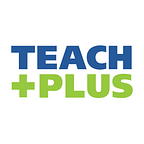Helping Student Build Skills During Remote Learning
By Michelle Gainer
It’s been six weeks since Governor Wolf first closed the schools in Pennsylvania and three weeks since we found out we would not be returning this academic year. For too many of us, the school year as we know it ended abruptly and without celebration, launching teachers, parents, and students into the unknown territory of online learning.
Since March 13, when we closed our schools, I have been calling my students to check in. A conversation with Alyana’s mom stands out. Alyana is sad she is missing out on the performances and celebrations that are part and parcel of being in fifth grade but most of all Alyana misses coming to school, seeing her friends, and learning new things; she’s worried she won’t be ready for sixth grade.
Like Alyana, my students are sad about all they’re missing, and they’re worried they won’t be ready for next year. How can we possibly provide an online replacement to the in-person experience students are used to?
We can’t. What I focus on instead are the specific skills students can develop now that their learning has gone online. I can use this time to help my students build their fluency in technology through practice, strong routines around completing work and prioritizing assignments, and the habit of asking for help when they’re unsure what to do. Below are three suggested areas of focus for teachers as they make the move to teaching online.
Practice Makes Perfect
I’ve had the chance to use a computer A LOT. If my students are going to build strong technology skills, they need the same opportunity
During my calls home, I realized that 90 percent of my fifth-graders don’t have a home computer, and in fact, across the district only 45 percent of students in grades 3–5 have access to a computer for home learning. Luckily, through authorized funding, donations, and partnerships, the district was able to purchase 40,000 new Chromebooks to support student online learning, passing out a total of 81,000.
To get my students ready for sixth grade, I am delivering video lessons, perfecting them as I record. I’ve assigned games to help my students practice typing; curriculum designed to guide them through Internet searches; and multiple literacy-focused education sites to build familiarity with different programs and websites. I can walk them through tech problem-solving strategies through screencast demonstrations. And I can employ small group meetings to build my students’ confidence in their presentation skills. The more my students practice these skills, the faster they’ll boost their technology literacy, which will support their learning moving forward. And with these new computers, my students are going to get a lot of practice.
Build Strong Routines
Getting all of my work done on time and managing my home life takes strong routines. It is the same for my students. With instruction going online, they are responsible for logging-in everyday, checking their email, checking their assignments, and completing daily work — all on their own.
In sixth grade, my students will need to balance work from multiple teachers. For now, I’m giving them a sample schedule to help coordinate their online learning assignments. To instill an understanding of prioritization, I provide them with three types of assignments: simple daily assignments, weekly readings, and one end-of-report-period assignment to be completed incrementally. These different assignment types will help build a routine around maintaining an assignment calendar. Check out National PTA for home learning resources designed with teachers and parents in mind.
Ask for Help
It’s hard to admit when you need help, even as an adult. I hate asking questions in group settings, and I have noticed my students feel the same way. With online instruction, classmates are not privy to requests for help. I am utilizing daily assignments in Google Classroom, private messages, and the comment and chat features in Google Docs and Slides to communicate with my students. Through these one-on-one conversations, I am able to build my students’ comfort with question-asking, a skill they will need in middle school. Online instruction is new for all of us — it’s okay if we make mistakes or don’t understand something. It’s okay to ask for help.
While preparing my first online lessons and figuring out how to bring all my students together digitally, I realized that the skills I hope they are able to build are the same skills I need to lean on as I navigate this new way of teaching. I have learned to bring the habit of practice, strong routines, and knowing when to ask for help to my new approach to teaching. If you’re involved in education and nervous or uncertain of what teaching and learning are going to look like moving forward, know that you are not alone. Whether you are a teacher, parent, or student, just remember: with practice it will get easier, you will get better, routines will help you get your work done, and help is available.
Michelle Gainer is a 5th grade science and social studies teacher at Bayard Taylor Elementary School in Philadelphia and a Teach Plus Philadelphia T3 Teacher Leader.
